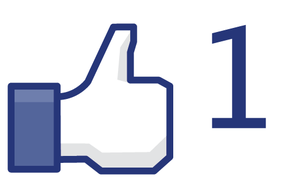The world of social media is shiny and bright where everyone’s teeth are pearly white and even their fingernails have no grease or dirt under them. I like that. But what if I disliked that? I still don’t have access to a dislike button.
We try to show our support for various things, places, pages, people and well, just stuff. You like my stuff? Well, golly gee, I’ll like your stuff, too. What’s not to like about liking each other’s stuff, you know?
I would like to see at least a bogus explanation for the dislike button not being available. Something along the lines of what software manufacturers use when discontinuing support of their software in updated versions that are broken so they don’t run on older hardware.
“We’re no longer supporting your use of the like button. In order to bring you the latest innovations of the like button, we urge you to upgrade your device to a more modern one with more available resources so that you may enjoy all the new features the like button has to offer.”
That would be more in line with how business is done these days. Break the functionality of something that works perfectly fine so more money is made off of it by forcing consumers to buy newer devices, so that they may retain functionality they have always enjoyed, upon purchasing newer versions of old software. Makes perfect sense, right? Right.
Fortunately the like button has not required us updating our browsers, computers, tablets, phones or what have you. We can still like as much stuff as we always have. I get several requests to like things each week. Usually they are pages on Facebook or something on LinkedIn. I’m sort of a streaky “liker.” That is, my rate of liking is kind of like, well, sort of like, not slow and steady like. I can go days, weeks (but not usually months) without liking something. Then all of a sudden I’ll like three things in one day. I know, crazy, right? That is my way to get my like on. I like that.
I’ve never seen the need for a social media “love” button. That would cheapen the word love entirely. I know everyone, including myself, says things like, “I love ice cream!” Well, love is too strong a word for things like ice cream. Let’s just be honest or at least more appropriate. We really, really, really like ice cream. Or, we like it a lot.
Some people have said (well, that’s not really true as I don’t personally know anyone who has, I mostly say things like this) we should have “degrees of like” buttons. Like a 50 Shades of Like button. You could just plain like something; really like something; kind of like something, like something more on some days than others; like something to the point it’s made your day, whatever, you get the picture.
The like button is really still in its infancy. It is the infancy for implied acceptance. When is a level of adequate likes reached? Is it a certain number? Like, if you have followers, is not it, like, implied that they like your stuff? Would a like button that is available to your followers be redundant? I think followers and likes go hand in hand.
“I would like you to follow me. And if you follow me, I may follow you. I will probably at the least like something you post or say, but I can’t really make any promises to that effect. If you can’t follow me, however, you know, like unconditionally, so that you won’t make me feel bad if I don’t follow you, can you at least hit the like button on this post? That would be really nice. In fact, I would like it very much (I just thought how silly I like when my posts get likes. Again, cray-zee).
All in all, the like button is a shiny beacon of hope and support for social media. Every so often the prospect of a dislike button leaps into the popular debate. Dislike has negative connotations, not to mention it is not very shiny and would probably be used with a sad face next to it sometimes, whereby the like button is a smiley face kind of button choice accompaniment to utilize.
That is what happens every time someone says, “We need a dislike button!”
These people are immediately labeled as negative. “Why are you so negative, Bob? If you can’t show your support, just don’t say anything.”
Well, phooey to you, too. The dislike button would come in handy when someone announces bad news in a Facebook status update:
“I noticed I have a hang nail this morning.”
“Dislike!”
“Dislike!”
“Dislike!”
Look at that, you already have three people who “dislike” that. That is being supportive like nobody’s business!
What about, “I did a load of laundry this morning but I thought it was whites. I like to do my whites in hot water. I didn’t have my coffee yet, though, before I started loading the washing machine. Now I just realized I filled up the washing machine with colored AND white clothes and my t-shirts and BVD’s are all ruined! Sucks!”
“Dislike!”
“Dislike!”
“Dislike!”
“Dislike!”
That was four dislike shows of support, and they came in faster than the hang nail trouble ones did. You can’t beat that for engaging Facebook status updates that everyone loves, I mean likes, I mean dislikes.
There isn’t a dislike button here, so you have to click the like button. Go on, you know you want to. It feels good to show your support here, too, doesn’t it?
What’s not to like?
Related articles
- Friends? (snarkybartender.com)
- You Like This. (csmt13.wordpress.com)




